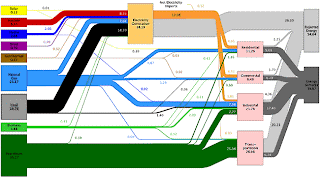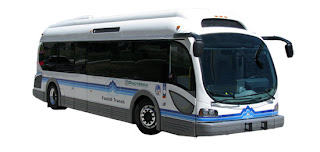Blog Archive
-
▼
2010
(3291)
-
▼
August
(435)
- Li-ion battery prices to drop 25% in 2010 due to m...
- Nissan starts selling all-electric Leaf today
- John Park vehicle concept art
- Fully Charged, bizarre BBC bias
- Americans using less energy, more renewables
- Proterra First Deployment of All-Electric Buses by...
- Mazda Shinari with new Mazda design
- Volkswagen Up!: tests have begun
- ford escape hybrid pictures
- 2010 Jaguar Cars XJ75 Platinum Concept Car Luxury ...
- 2010 Jaguar Cars XJ75 Platinum Concept Car Luxury ...
- One tonne of Thorium produces as much energy as 3....
- EPA and NHTSA revise fuel economy labels in time f...
- Volvo Sport Wagon
- Mazda Shinari Concept
- Citroen DS4. Official photos
- 2011 De Macross GT1
- Awesom Cars Gallery
- Concept car design by Giorgio
- Hot Car Volkswagen Walpaper
- 2012 Morgan Sports Cars EvaGT
- 2012 Morgan Sports Cars EvaGT
- Mercedes Arrow Is A Lightweight Two-Seater Vehicle...
- Peugeot Modif
- Citroen Survolt Concept 2010
- Mitsubishi Sports Cars Pictures
- Mitsubishi Cars In India
- Mitsubishi Cars Wallpapers
- BBC say EVs more expensive to own than petrol powe...
- News in brief
- Researchers tinkering with bio-fuel (UK)
- WSJ's Dan Neil review of the Nissan Leaf (w/Video)
- Best girls Moscow Auto Show 2010
- 2011 Holden Commodore VE Series II
- ABT Audi TT RS 501 hp
- Lotus Evora Cup GT4 Debuts this weekend
- APS Sportec Audi S5
- Scheme to 'pull electricity from the air' sparks d...
- Hot Muscle Car Wallpapers
- Jaguar XJ Sentinel. Special for Moscow Auto Show ...
- Sprint Car Racing Fast and Furious
- Classy Car Models
- Auto Salon Aussie Car of the Month
- Auto Salon Aussie Car of the Month
- 2011 Renault Latitude Debuts At Moscow【Video】
- Ford has presented in Moscow new Grand C-Max
- Paris Preview: 2011 Lotus Evora S and Evora IPS au...
- Concept Car
- Alfa Romeo MiTo Turismo Sport Edition
- Mercedes-Benz SLS AMG GT3 shine on Monterey
- New Lancia Stratos
- 2011 New Mazda2 Facelift
- 2011 Perana Sports Car Z-One
- 2011 Perana Sports Car Z-One
- 2010 Ferrari Italia
- 2010 Ferrari Spider
- 2010 Ferrari Enzo Gemballa mig-u1
- Mercedes-Benz CL on Moscow Auto Show 2010
- Photo Gallery: 2011 MINI Countryman
- Lexus RX 270 on Moscow Auto Show
- Chevy Corvette due May 2011 (UK)
- No diesel-hybrid for MINI
- Renault workers to protest about importing Latitud...
- New Record Speed of 307.66 MPH stands for Buckeye ...
- Atmospheric Electricity Could Become a New Source ...
- 2011 Jaguar Cars XJ Sentinel Luxury Sports Saloon
- Brabus Mercedes SLS AMG
- 2011 BRABUS iBusiness SV12 R
- Ford Kicks Off 14-City EV Tour
- Top McLaren Cars Wallpaper
- toyota highlander hybrid cars
- Suzuki Swift pricing announced (UK)
- Concept vehicle art by Francis Tsai
- The most powerful Porsche in the history ! Already...
- In Moscow have shown the newest Ford Focus
- Renault has shown in Moscow a business class sedan
- Hyundai has shown Russian model RB
- Remy and MotoCzysz Partner to Produce Electric Dri...
- Moscow Motor Show: 2011 Hyundai RB Concept
- Student-Built Electric Car passes 300 MPH Aiming f...
- Meet Obama's point man on electric cars
- US motorists warm to electric car invasion
- Awesome Ford Mustang Wallpaper
- Muscle Car Wallpaper >> Mustang GT Wallpaper
- 2010 Ferrari California Cars Pictures
- 2010 Ferrari F430 Cars Pictures
- Russian Super Car Muska!! luxury and high performa...
- Modified Bentley Continental GT | new bodykit for ...
- Saleen S5S Raptor concept
- New sport n modification Ferrari F 50
- New Mercedes МКВ Р1000
- 2011 Chevrolet Volt Specifications
- 2011 Porsche 918 Spyder hybrid Review
- 2010 Citroen DS3 - New Car Geneva 2010
- The Audi Hydron Amphibious Super Cars
- New 2010 Volkswagen T5 Van facelift
- Alfa Giulia GTAm – best Alfa Romeo ever
- Morgan plans Diesel Series Hybrid Sports Car
- Pre-war Car Petr Novague ECO Car Concept Inspired ...
- Pre-war Car Petr Novague ECO Car Concept Inspired ...
-
▼
August
(435)
Li-ion battery prices to drop 25% in 2010 due to market share grab
Panasonic Corp. and Samsung SDI Co., the world’s two largest makers of rechargeable batteries, may deepen price cuts this year as overproduction worsens a glut in the industry, analysts said.
Lithium-ion battery prices may tumble 19 percent in 2010, the biggest drop in five years, said Hideo Takeshita, an analyst at the Institute of Information Technology Ltd. in Tokyo. Shiro Mikoshiba, an analyst at Nomura Holdings Inc., said the worsening oversupply may push prices down as much as 25 percent.
The price drops highlight how battery makers in Japan and South Korea, accounting for 75 percent of global production, may be sacrificing profit for market share as automobiles with no gas tanks are projected to help triple sales of lithium-ion cells in six years. Cheaper batteries may lead to lower costs at carmakers such as Nissan Motor Co., whose all-electric $32,780 Leaf sedan is scheduled to go on sale in November.
“Battery makers will probably go through a tough time with falling prices,” said Mitsushige Akino at Ichiyoshi Investment Management Co., who oversees about $450 million in assets in Tokyo. “The business may become lucrative only for a couple of companies with dominant market share. Others may never be able to make money.”
Winning the Battle
South Korean battery makers including Samsung and LG Chem Ltd. may better cope with lower prices than Japanese rivals because they purchase materials more cheaply from China and have faster production, Takeshita said. The won’s weakness against the yen also makes Korean products more competitive, he said.
“We anticipate the harsh price competition with South Korean makers will continue,” said Akira Kadota, a spokesman at Osaka-based Panasonic. “We are reviewing our production process to strengthen our cost competitiveness so that we can win the battle.”
Panasonic, which vaulted atop the rechargeable-battery industry with its purchase of Sanyo Electric Co., rose 1.6 percent to 1,060 yen as of the 11 a.m. break in Tokyo trading, narrowing its loss this year to 20 percent. Samsung SDI, the battery-making unit of South Korea’s largest industrial group, fell as much as 4.1 percent.
Samsung SDI was downgraded to “reduce” from “hold” at BNP Paribas Securities (Asia). Analyst Peter Yu cited excessive hype about batteries for electric vehicles as part of the reason, according to his report today. The stock has gained 19 percent this year.
$30 Billion Industry
Samsung SDI, based in Yongin, South Korea, will likely overtake Panasonic’s Sanyo as the world’s top producer of lithium-ion batteries this year, according to estimates at the Institute of Information Technology. Samsung SDI spokesman Seo Hae Soo declined to comment on the outlook for prices.
LG Chem, the third-largest maker of rechargeable batteries, expects price drops to persist, spokesman Terry Lee said. Falling prices of the product won’t have a serious impact on the company’s profit because LG Chem is buying lithium at competitive prices, he said.
At stake is leadership in an industry that Panasonic estimates will grow to 2.5 trillion yen ($30 billion) by 2015 from 926 billion yen last year. Shipments of lithium-ion batteries are estimated to rise 31 percent in 2010, after a 2 percent drop last year, according to the Institute of Information Technology.
Electric Vehicles
While lithium-ion cells are mainly used to power laptop computers and mobile phones, electric vehicles may fuel most of the growth. Sales of batteries in electric, hybrid and plug-in hybrid cars will increase to 1.7 trillion yen in 2020 from almost zero in 2009, according to March estimates at Daiwa Securities Group Inc.
Panasonic, which has pledged to invest 300 billion yen in energy-related products over three years, started production of lithium-ion cells at a factory in Osaka in April, aiming to double its annual production to 600 million units. The company aims to triple sales of lithium-ion cells by March 2016, Naoto Noguchi, president of Panasonic’s battery unit, said in an interview this month.
Sony Corp. is spending 40 billion yen to boost its monthly production capacity this year 80 percent from 2008. The company built a battery plant north of Tokyo in March and is adding facilities in Singapore and China.
Sony anticipates a difficult environment for the battery business because of competition and price declines, said Tomio Takizawa, a spokesman at the Tokyo-based electronics maker.
Samsung Group, whose units include SDI and top television- maker Samsung Electronics Co., said in May it plans to invest 5.4 trillion won ($4.5 billion) in batteries for electric vehicles by 2020.
“It’s a battle between the South Korean and Japanese makers,” Takeshita said. “They’re playing a game of endurance that’s eroding profitability.”
.
Nissan starts selling all-electric Leaf today
At long last, Nissan begins taking actual orders today for the first next-generation fully electric car from a major automaker, the Leaf.
More than 18,000 people who plunked down $99 to stay on the reservations list will have first crack at turning their interest into an actual order for the all-electric, five-seat car. Orders will be taken online and Nissan is still taking reservations on Leaf's web site. Even though now you can actually pay for one, deliveries won't start until December.
The car has a range of about 100 miles per charge. Nissan has been having inspectors make home visits and taking other steps to make sure customers will be able to recharge at home and likely be happy with the car.
The base level Leaf, the SV, is priced at $33,720, Nissan says. It comes with a list of standard features, including cruise control and a navigation system. There is only one higher trim level, the SL, at $33,720. The list of extras?:
It includes a spoiler with a solar panel, backup camera, the Homelink garage opener system, automatic on-off headlights, fog lights and a rear cargo cover. There is only one option: a $700 quick-charge port that can recharge the Leaf on the road in as little as a half hour.
Leaf is eligible for federal tax credits that can reduce its cost to as little as $25,280. It is also has lease options as low as $349 a month for 36 months.
.
John Park vehicle concept art
jparked Concept ships and concept robots. On conceptships too.




Keywords: digital vehicle concept vehicle renders art by john park student industry professional chino hills california jparked blogspot
Keywords: digital vehicle concept vehicle renders art by john park student industry professional chino hills california jparked blogspot
Fully Charged, bizarre BBC bias
This weeks episode of FullyCharged with Robert Llewellyn is a bit of a rant about the BBC story we examined over the weekend.
The bottom line is, the BBC writer Brian Milligan calculated both cars @ 50% depreciation over 3 years.
The 'trick' used by the BBC writer was to calculate depreciation on the MiEV BEFORE deducting the £5k subsidy. If depreciation is calculated AFTER subtracting the subsidy then the MiEV becomes £1,557 or 16% CHEAPER than the Fiat 500.
I'm surprised Robert didn't get Brian Milligan on the phone and give him a bit of a grilling to be honest. Maybe next time.
Americans using less energy, more renewables
Americans are using less energy overall and making more use of renewable energy resources.
The United States used significantly less coal and petroleum in 2009 than in 2008, and significantly more wind power. There also was a decline in natural gas use and increases in solar, hydro and geothermal power according to the most recent energy flow charts released by the Lawrence Livermore National Laboratory.
“Energy use tends to follow the level of economic activity, and that level declined last year. At the same time, higher efficiency appliances and vehicles reduced energy use even further,” said A.J. Simon, an LLNL energy systems analyst who develops the energy flow charts using data provided by the Department of Energy’s Energy Information Administration. “As a result, people and businesses are using less energy in general.”
The estimated U.S. energy use in 2009 equaled 94.6 quadrillion BTUs (“quads”), down from 99.2 quadrillion BTUs in 2008. (A BTU or British Thermal Unit is a unit of measurement for energy, and is equivalent to about 1.055 kilojoules). The average American household uses about 95 million BTUs per year.
Energy use in the residential, commercial, industrial and transportation arenas all declined by .22, .09, 2.16 and .88 quads, respectively.
Wind power increased dramatically in 2009 to.70 quads of primary energy compared to .51 in 2008. Most of that energy is tied directly to electricity generation and thus helps decrease the use of coal for electricity production.
“The increase in renewables is a really good story, especially in the wind arena,” Simon said. “It’s a result of very good incentives and technological advancements. In 2009, the technology got better and the incentives remained relatively stable. The investments put in place for wind in previous years came online in 2009. Even better, there are more projects in the pipeline for 2010 and beyond.”
The significant decrease in coal used to produce electricity can be attributed to three factors: overall lower electricity demand, a fuel shift to natural gas, and an offset created by more wind power production, according to Simon.
Nuclear energy use remained relatively flat in 2009. No new plants were added or taken offline in this interval, and the existing fleet operated slightly less than in 2008.
Of the 94.6 quads consumed, only 39.97 ended up as energy services. Energy services, such as lighting and machinery output, are harder to estimate than fuel consumption, Simon said.
The ratio of energy services to the total amount of energy used is a measure of the country’s energy efficiency.
Carbon emissions data are expected to be released later this year, but Simon suspects they will tell a similar story.
“The reduction in the use of natural gas, coal and petroleum is commensurate with a reduction in carbon emissions,” he said. “Simply said, people are doing less stuff. Therefore, they’re burning less fuel.”
.
Proterra First Deployment of All-Electric Buses by Major Transit Agency
Proterra today announced the first major deployment of its EcoRide BE35 zero-emission, fast-charge battery-electric transit buses by Foothill Transit, a premier public transport provider that operates bus services in Southern San Gabriel and Pomona Valleys, located in the eastern portion of Los Angeles County.
On Sep. 3, Foothill Transit will launch the Proterra EcoRide BE35 buses and related fast charging stations into its existing bus fleet and transit routes with the goal of establishing a full fleet of clean-fueled vehicles by 2011.
"The first commercial deployment of Proterra's battery-electric buses by a major transit agency like Foothill Transit is a significant milestone for Proterra and a bold step by the nation in our collective effort to decrease dependence on fossil fuel," Proterra President and CEO Jeffery Granato said. "We look forward to additional communities throughout the U.S. and globally benefitting from the highly efficient, cost effective, clean alternative transit solution now available with the introduction of the EcoRide BE35."
The deployment of Proterra's EcoRide BE35 buses, known as the "Ecoliner" by Foothill Transit, greatly advances the electric transit industry, providing a real-world example of the benefits and ease of deployment of Proterra's zero emission buses and charging solutions. It further demonstrates transit agencies' existing appetite for cleaner commuting options.
In addition to its unmatched performance and overall cost savings, Proterra's clean transit solutions offers California transit agencies solutions to address the Zero Emission Bus (Zbus) regulation, which requires large California agencies to purchase 15 percent of their annual bus orders as zero emission buses starting in 2012.
Proterra's EcoRide BE35 buses are unlike any conventional or hybrid-electric passenger bus available on the market today. The bus significantly reduces air and noise pollution for riders and local communities, while dramatically reducing vehicle operation costs for transit agencies. The EcoRide BE35 contains all electric components, including an electric drive motor supplied by UQM that allows greater acceleration than that of a conventional bus, combined with leading technology solutions that allow for a quiet and smooth uninterrupted ride.
With up to three hours of operation and the ability to recharge in less than 10 minutes on route, thanks to AltairNano lithium titanate batteries. Proterra's buses can easily be incorporated into any transit agencies' existing routes without impacting their schedules or routes while delivering a quieter, more comfortable experience to riders. Additionally, without the maintenance or fuel costs associated with conventional buses, the Proterra BE35 achieves a 400 percent improvement in fuel economy, and greater than $300,000 savings in total lifetime operating expenses.
Mazda Shinari with new Mazda design
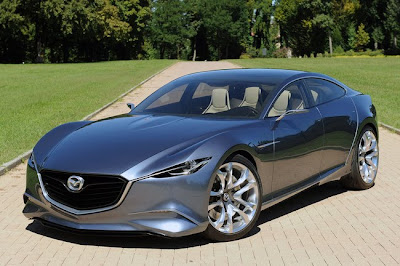
Many already probably heard that design of cars Mazda will be changed soon. Japanese promised to present this year the first concept, made in new design. And here – in vicinities of Milan Mazda has shown model under name Shinari.
Mazda new design receive name – Kodo. All it's secrets become known a bit later. While we can notice only that the new main designer of company Ikuo Maeda who has replaced on this post Lawrence van der Akera was engaged in Mazda Shinari creation.
The official presentation of Mazda Shinari will pass in the end of September on a showroom in Paris. However when on sale will appear the cars made in style Kodo, it is not known yet. Apparently, the first new design should try on compact crossover CX-5 which will appear next year.
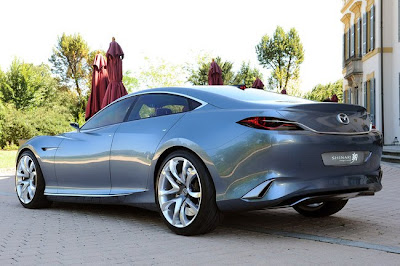
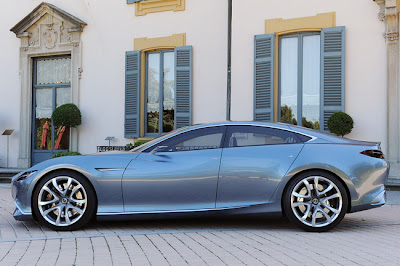
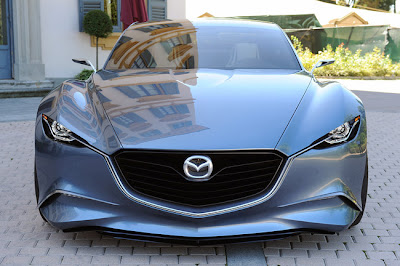
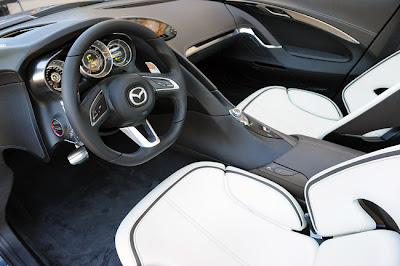
Volkswagen Up!: tests have begun
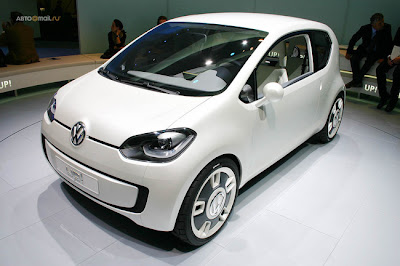
Volkswagen has started road tests of the smallest car which will be called Up!. For the first time concept of this model have been shown three years ago, however all this time a management of German concern reflected over necessity of release the similar machine.
Apparently, the first on the market leaves three-door Up!, which will be equipped with three-cylinder petrol and diesel engines. However should appear also electromobile a bit later. Besides, there is an information that simultaneously with Volkswagen Up!will begin assembly similar model under a brand of Skoda which will have hardly more modest inner trim and, accordingly, will cost cheaper. The premiere of the smallest Volkswagen will take place next year.
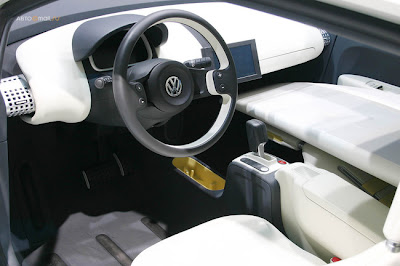
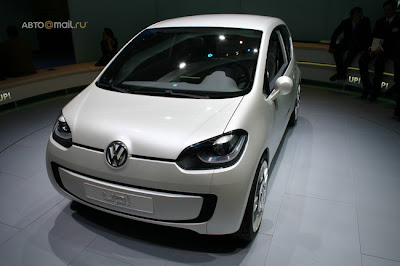
ford escape hybrid pictures
For 2010, Ford Escape and Mercury Mariner add a host of new features that improve safety and make driving more convenient. Escape and Mariner also become two of the first Ford Motor
Company vehicles to feature SYNC® with Traffic, Directions and Information – helping reduce distractions while accessing important route and traffic information.
2010 Jaguar Cars XJ75 Platinum Concept Car Luxury Sports Salon
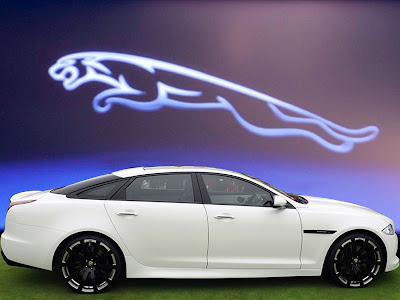
The new 2010 Jaguar XJ Luxury Sports Saloon Platinum Concept Car celebrates Jaguar's 75th Anniversary, and highlights the uniqueness of the XJ. Jaguar design team has created the Jaguar Luxury Sports Saloon XJ75 Platinum Concept, a one-of-a-kind design project on display at the 2010 Pebble Beach Concours D’Elegance Concept Car Lawn.

2010 Jaguar Cars XJ75 Platinum Concept Car Luxury Sports Salon
The XJ75 Platinum Concept Car is the company's first demonstration of the design customisation potential of the striking new XJ luxury salon, emphasising the Jaguar's dramatic interior and exterior styling themes. "The XJ Luxury Sports Saloon is thoroughly modern, and captures the innovative and daring character that our founder Sir William Lyons built into every Jaguar. And the design team clearly had some fun making their first one-of-a-kind XJ design concept car in that spirit."
The XJ75 Luxury Sports Saloon Platinum Concept centre console houses a bespoke clock developed and designed in partnership with the Bremont Watch Company.

An independent British company, Bremont creates beautifully engineered and designed mechanical watches hand assembled in Switzerland.

2010 Jaguar Cars XJ75 Platinum Concept Car Luxury Sports Salon
"From a pure design perspective, the XJ75 Luxury Sports Saloon Platinum Concept is foremost about emphasising the striking proportion and presence of the new XJ, with a distilled black and white theme, which conjures up the sense of precious platinum," said Jaguar XJ Chief Designer Giles Taylor. "At the same time, the pure sporting character of XJ is brought to the fore by keeping the car's clean graphic approach and further lowering its stance."
Dominated by striking white and black contrast precious metals platinum theme suggests, the Jaguar XJ75 Platinum Concept is a high-performance 470-hp supercharged engine 2011 Jaguar XJL with new ground-hugging front, rear and rocker panel is fitted.

Performance on the XJ75 Platinum Concept is derived from its 5.0-litre Supercharged direct-injection V8 with 470 horsepower and 424 lb.-ft of torque. Entertainment is provided by a 1,200-watt Bowers & Wilkins surround sound system with 20 speakers powered through 15 channels and state-of-the-art sound processing technology.

This XJ75 Platinum Concept Car was designed to both celebrate the marque’s past and acknowledge the increasingly personal nature of today’s luxury cars.
2010 Jaguar Cars XJ75 Platinum Concept Car Luxury Sports Salon

The new 2010 Jaguar XJ Luxury Sports Saloon Platinum Concept Car celebrates Jaguar's 75th Anniversary, and highlights the uniqueness of the XJ. Jaguar design team has created the Jaguar Luxury Sports Saloon XJ75 Platinum Concept, a one-of-a-kind design project on display at the 2010 Pebble Beach Concours D’Elegance Concept Car Lawn.

2010 Jaguar Cars XJ75 Platinum Concept Car Luxury Sports Salon
The XJ75 Platinum Concept Car is the company's first demonstration of the design customisation potential of the striking new XJ luxury salon, emphasising the Jaguar's dramatic interior and exterior styling themes. "The XJ Luxury Sports Saloon is thoroughly modern, and captures the innovative and daring character that our founder Sir William Lyons built into every Jaguar. And the design team clearly had some fun making their first one-of-a-kind XJ design concept car in that spirit."
The XJ75 Luxury Sports Saloon Platinum Concept centre console houses a bespoke clock developed and designed in partnership with the Bremont Watch Company.

An independent British company, Bremont creates beautifully engineered and designed mechanical watches hand assembled in Switzerland.

2010 Jaguar Cars XJ75 Platinum Concept Car Luxury Sports Salon
"From a pure design perspective, the XJ75 Luxury Sports Saloon Platinum Concept is foremost about emphasising the striking proportion and presence of the new XJ, with a distilled black and white theme, which conjures up the sense of precious platinum," said Jaguar XJ Chief Designer Giles Taylor. "At the same time, the pure sporting character of XJ is brought to the fore by keeping the car's clean graphic approach and further lowering its stance."
Dominated by striking white and black contrast precious metals platinum theme suggests, the Jaguar XJ75 Platinum Concept is a high-performance 470-hp supercharged engine 2011 Jaguar XJL with new ground-hugging front, rear and rocker panel is fitted.

Performance on the XJ75 Platinum Concept is derived from its 5.0-litre Supercharged direct-injection V8 with 470 horsepower and 424 lb.-ft of torque. Entertainment is provided by a 1,200-watt Bowers & Wilkins surround sound system with 20 speakers powered through 15 channels and state-of-the-art sound processing technology.

This XJ75 Platinum Concept Car was designed to both celebrate the marque’s past and acknowledge the increasingly personal nature of today’s luxury cars.
One tonne of Thorium produces as much energy as 3.5M tonnes of coal
If you've read about Thorium or perhaps watched the presentations on Google Tech Talks you will be aware of the amazing potential of this dormant technology from the 50s.
As little as One tonne of Thorium produces as much energy as 3.5 Million tonnes of coal or 200 tonnes of uranium with closer to 100% fuel use compared to 0.7% with uranium. At a cost of only $100k, one tonne of Thorium can provide 1 GW-year of electric energy, enough to power a city of 1 Million for a year.
The UK based Telegraph has published a call to action on Thorium R&D. Norwegian group Aker Solutions is working on the thorium fuel-cycle at its UK operation. Aker are looking for tie-ups with the US, Russia, or China to assist their efforts.
The only other country active in Thorium research is India who have their own projects - none yet built - dating from days when they switched to thorium because their weapons program prompted a uranium ban.
As with all other shifts in the status-quo, it seems the incumbents have the upper hand in closing down any new competition. With nuclear power, governments play an disproportionate large role due to Nuclear Safety Regulations that place a huge licensing and certification burden on any new installation. As a result, despite the usual media driven xenophobia surrounding anything Nuclear, for Thorium to gain traction political will is essential.
With so much new investment in developing renewable energy sources it would seem logical that Thorium should get a second look.
Telegraph.co.uk
.
EPA and NHTSA revise fuel economy labels in time for Leaf and Volt sales
Just ahead of US sales commencing for the Nissan Leaf electric vehicle and the Chevrolet Volt extended range electric vehicle the EPA and NHTSA have issued revised Fuel Economy labeling to replace the confusion caused by their previous efforts.
The labels cover Electric vehicles, Plug-in Hybrid Electric Vehicles, Compressed Natural Gas Vehicles and Flexible Fuel Vehicles.
For electric vehicles, the new labels will estimate the expected savings in cost over five years as compared to a regular vehicle. It will also give statistics such as range, estimated charge time, kWh used per 100 miles, and a MPGe estimate on both the highway and the city…as well as expected cost to operate.
For extended range vehicles, it will still give the range on electric power, the MPG equivalent, charge time and cost per year; but as well give your classic MPG in extended range. Then it blends the whole thing into a MPGe equivalent as well.
EPA
.
Mazda Shinari Concept

Mazda has releases its future design direction with the sleek Shinari concept car. which will make its public debut at the Paris Motor Show at the end of September. The stylish four-door coupe previews the look of the next generation of Mazdas and ushers in a new design language.
With the launch of the new concept, Mazda also announced that the company’s future design language will be described by the word Kodo, which is Japanese for soul of motion. Talking about the new design language, Ikuo Maeda, general manager of Mazda Motor Corp.’s design division said: "this design will lead to the next generation of Mazda design and will lead to other elements."
The coupe shows the future face of Mazda's family of vehicles -- an aluminum signature wing, the line that runs through the headlights and under the grille -- as well as the overall styling trend for future production models.
The Shinari as a four-door coupe is a clear signal that Mazda is targeting the premium segment where similar vehicles such as the Aston Martin Rapide, Porsche Panamera and upcoming Fisker Karma already reside. In order to do so Mazda officials ackowledged that interior quality levels must improve.
The company has not released any official information on the Mazda Shinari yet. When it will, we'll be able to show you high resolution images of the Mazda Shinari and to offer a full set of details on the new concept.
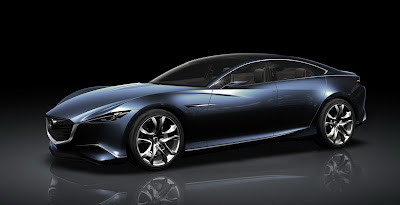
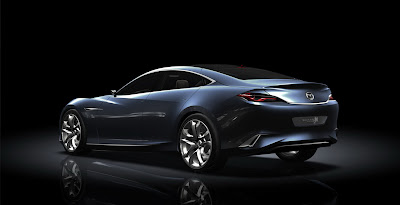
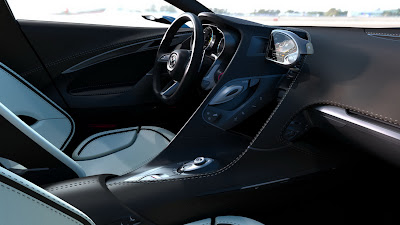
Source : Automotive News Europe
Subscribe to:
Posts (Atom)

